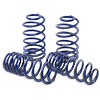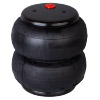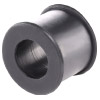Faults of shock absorber protection boot
- mechanical damage (cracks, holes) to the dust boot;
- dismount of the dust boot from castellated cap;
- clogging and contamination of the part;
- normal wear of the dust boot;
- dust boot fixtures fault.
Symptoms of shock absorber dust protection failure
- creak or rattle of shock absorbers during movement;
- at speeds above 80 km/h the car sways;
- external worn condition of the dust boots.
Causes of shock absorber dust boots faults
- use of non-original or non-conforming parts and consumables;
- use of low-quality components;
- dust boot damage due to small stones strikes while driving;
- improper part installation;
- looseness of mountings.
Diagnostics
Dust boots should be checked by an inspection. Be sure to assess the state of mountings and check the part for mechanical damage.
Remember that untimely replacement of a damaged dust boot can cause severe damage to shock absorbers and struts of the car.
Average life of a shock absorber dust boot is 20 000-30 000 km or 1-2 years of operation. For normal operation of the shock absorbers it is recommended to inspect the dust protection mechanism at least once every 3 months.
Replacing shock absorber dust boots
If damage occurs, the dust boot is not subject to repair, so it only requires replacement. To remove the damaged part and install a new one, you first need to completely remove the shock absorber with the dust boot and the bump stop. Next you need to remove the boot from the slot and remove it from the castellated nut. After that, you need to clean the mechanism from dirt. Next, a new part is installed, and the construction itself is reassembled.
Replacement of the boot requires efforts of several people and presence of special tools. For the part to last a long time, it is strongly recommended to install the original shock absorber dust boots.
Bump stops & Shock absorber dust cover finder for



















































































































